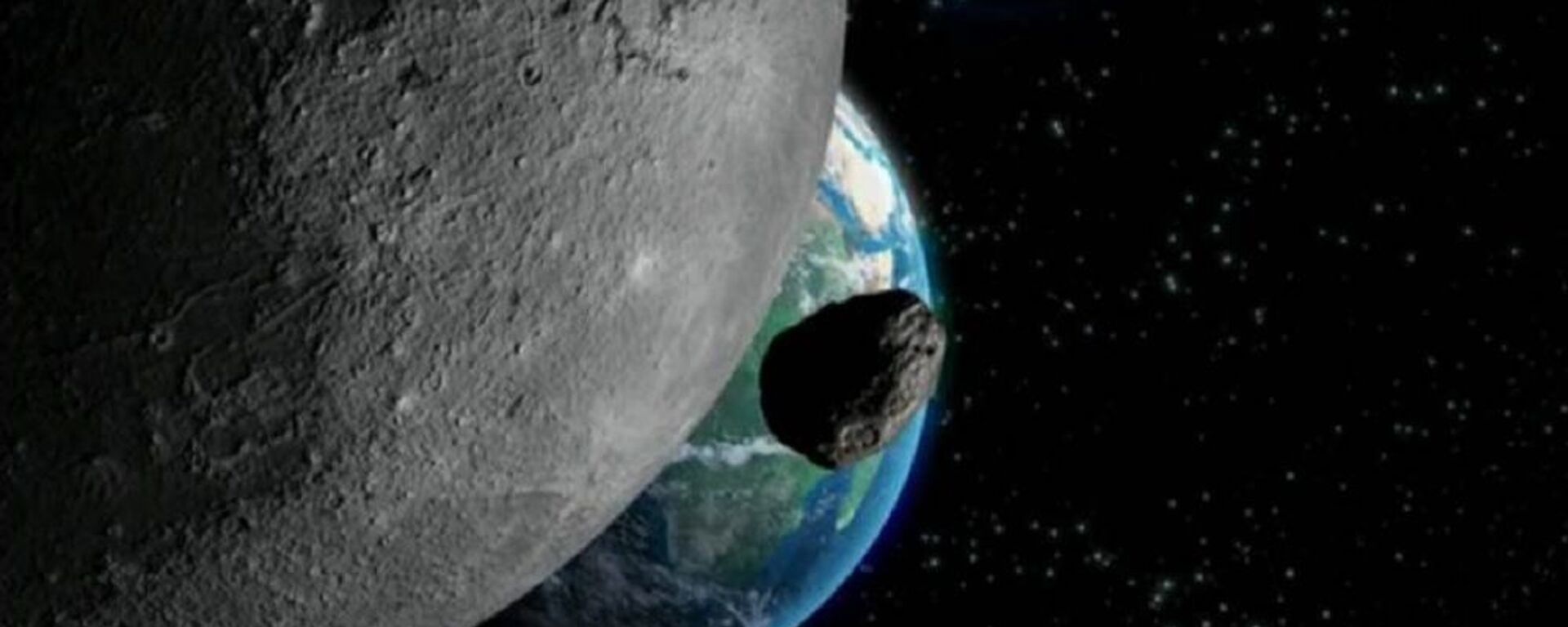https://sputnikglobe.com/20220219/three-is-a-crowd-first-ever-quadruple-asteroid-found-1093178352.html
Three is a Crowd: First-Ever Quadruple Asteroid Found
Three is a Crowd: First-Ever Quadruple Asteroid Found
Sputnik International
The newly-discovered moon is about 1.6 kilometres across and has an average orbital distance of around 340 kilometres. 19.02.2022, Sputnik International
2022-02-19T13:27+0000
2022-02-19T13:27+0000
2022-02-19T13:27+0000
science & tech
asteroid
moons
discovery
https://cdn1.img.sputnikglobe.com/img/107937/47/1079374797_0:0:1280:720_1920x0_80_0_0_8b21e997d134b65eb9cece962c4244a7.jpg
Astronomers have established that asteroid 130 Elektra, originally discovered back in 1873, is accompanied by three smaller satellite bodies (moons), essentially making it the first quadruple system to be found.As ScienceAlert points out, the first two moons orbiting the asteroid in question were spotted in 2003 and in 2014 respectively, with the latest discovery making this asteroid system the most numerous known to date.The team, led by Anthony Berdeu of the National Astronomical Research Institute of Thailand, implemented a "newly developed data reduction pipeline for integral field spectrographs", along with a "dedicated point spread function reconstruction algorithm to model the asteroid halo", on archival data from the Spectro-Polarimetric High-contrast Exoplanet REsearch facility (SPHERE).Using these techniques, the astronomers were able to spot the third moon S/2014 (130) 2, which is about 1.6 kilometres in diameter and whose average orbital distance is around 340 kilometres.For comparison, the asteroid's moon that was spotted in 2003, designated S/2003 (130), is about six kilometres across and orbits the asteroid at a distance of about 1,300 kilometres, while the second moon, S/2014 (130) 1, is about 2 kilometres across and has an average orbital distance of around 500 kilometres.The astronomers stated in their research that additional observations are needed to "better estimate" the orbit of the newly discovered moon and to "suggest a formation model".
https://sputnikglobe.com/20220216/giant-potentially-hazardous-asteroid-to-make-its-closest-approach-to-earth-in-century-1093071428.html
Sputnik International
feedback@sputniknews.com
+74956456601
MIA „Rossiya Segodnya“
2022
News
en_EN
Sputnik International
feedback@sputniknews.com
+74956456601
MIA „Rossiya Segodnya“
Sputnik International
feedback@sputniknews.com
+74956456601
MIA „Rossiya Segodnya“
science & tech, asteroid, moons, discovery
science & tech, asteroid, moons, discovery
Three is a Crowd: First-Ever Quadruple Asteroid Found
The newly-discovered moon is about 1.6 kilometres across and has an average orbital distance of around 340 kilometres.
Astronomers have established that asteroid 130 Elektra, originally discovered back in 1873, is accompanied by three smaller satellite bodies (moons), essentially making it the first quadruple system to be found.
As ScienceAlert points out, the first two moons orbiting the asteroid in question were spotted in 2003 and in 2014 respectively, with the latest discovery making this asteroid system the most numerous known to date.
The team, led by Anthony Berdeu of the National Astronomical Research Institute of Thailand, implemented a "newly developed data reduction pipeline for integral field spectrographs", along with a "dedicated point spread function reconstruction algorithm to model the asteroid halo", on archival data from the Spectro-Polarimetric High-contrast Exoplanet REsearch facility (SPHERE).
Using these techniques, the astronomers were able to spot the third moon S/2014 (130) 2, which is about 1.6 kilometres in diameter and whose average orbital distance is around 340 kilometres.
"We announce the discovery of S/2014 (130) 2, a third moon orbiting (130) Elektra, making it the first quadruple asteroid ever found," the team
declared.
For comparison, the asteroid's moon that was spotted in 2003, designated S/2003 (130), is about six kilometres across and orbits the asteroid at a distance of about 1,300 kilometres, while the second moon, S/2014 (130) 1, is about 2 kilometres across and has an average orbital distance of around 500 kilometres.

16 February 2022, 08:57 GMT
The astronomers stated in their research that additional observations are needed to "better estimate" the orbit of the newly discovered moon and to "suggest a formation model".
"This new detection nonetheless shows that dedicated data reduction and processing algorithms modelling the physics of the instruments can push their contrast limits further," they surmised.


